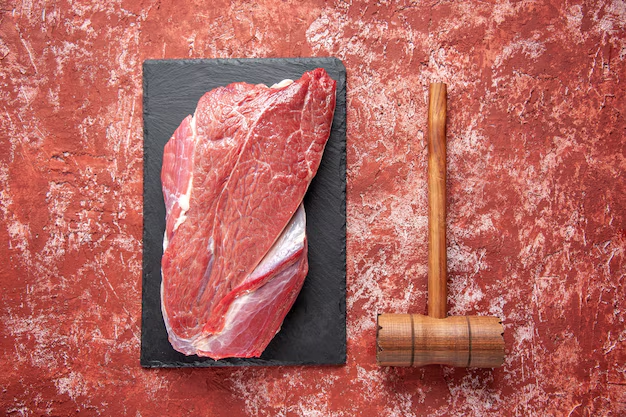How Long Can Meat Stay Fresh in the Refrigerator?
Being vigilant about food safety is crucial for maintaining a healthy lifestyle and avoiding foodborne illnesses. A common question that arises in this context is: How long can meat be safely stored in the refrigerator? Let's delve into this topic, explore the factors involved, and equip you with practical advice for storing meat effectively.
Understanding Meat Storage
When you think about storing meat in the refrigerator, several factors influence how long it remains safe and fresh to eat. Key elements include the type of meat, packaging, refrigerator temperature, and handling practices. By paying attention to these aspects, you can better manage the shelf life of various kinds of meat.
1. Refrigerator Temperature
A refrigerator set to the optimal temperature is vital for prolonging the freshness of meat. Keep your refrigerator at or below 40°F (4°C). This temperature slows down the growth of bacteria without freezing the food, ensuring safety and prolonging shelf life.
2. Types of Meat and Their Shelf Life
Different types of meat have varying shelf lives when stored in the refrigerator. Let's break it down:
🔹 Chicken and Poultry
- Raw Chicken: It’s advised to keep raw chicken in the fridge for no more than 1 to 2 days.
- Cooked Poultry: When cooked, poultry can last 3 to 4 days.
🔹 Red Meat (Beef, Pork, Lamb)
- Raw Red Meat: These can typically be kept in the fridge for around 3 to 5 days.
- Cooked Red Meat: Stays safe to eat for 3 to 4 days.
🔹 Ground Meat
- Raw Ground Meat: Whether beef, turkey, or chicken, ground meat has a shorter fridge life of 1 to 2 days.
- Cooked Ground Meat: Usually lasts 3 to 4 days in the fridge.
🔹 Processed Meats
- Bacon and Sausage: These can remain safe in the refrigerator for about a week.
- Ham: Fully cooked ham can last 3 to 5 days, while a picnic or canned ham can be stored for 1 to 2 weeks.
3. Proper Packaging
Packaging plays a significant role in how long meat stays fresh. Here's how you can ensure proper packaging:
- Wrap securely: Use airtight containers or wrap meats in aluminum foil, plastic wrap, or freezer paper to prevent air exposure.
- Vacuum sealing: This method significantly extends the freshness by reducing air contact.
- Labeling: Always label packages with a date to keep track of storage duration.
Practical Tips for Safe Meat Storage
To maximize the shelf life and safety of your meat, consider the following practical strategies:
4. Buying Fresh
Purchasing fresh meat is the first step toward safe storage. Select packages with the most distant expiration date and remember to check for any discoloration or off-putting smells.
5. Avoiding Cross-Contamination
Prevent cross-contamination by properly separating meats from other foods in your shopping cart, refrigerator, and during preparation. Use separate cutting boards and utensils for raw meats to maintain hygiene.
6. Thawing and Re-Freezing
If you choose to freeze meat, thaw it safely in the refrigerator. Once thawed, it's best not to refreeze unless cooked, as this can affect the texture and quality.
7. Monitoring Smell and Appearance
Always rely on your senses. Before consuming meat, check for any strange odors, sliminess, or discolorations—these are signs that the meat has potentially spoiled.
Knowing When to Discard
Knowing when to discard meat is just as important as knowing how long to keep it. Here's a helpful checklist to guide your decisions:
- Off smell: Any rotten or off-putting smell indicates spoilage.
- Change in texture: A slimy or sticky surface isn't safe.
- Color changes: Brown or grayish hues can suggest spoilage, though some slight color variations can be normal.
📋 Quick Reference Table for Meat Storage
Here's a handy table to quickly reference meat storage recommendations:
| Meat Type | Refrigerator Storage (Raw) | Refrigerator Storage (Cooked) |
|---|---|---|
| Chicken/Poultry | 1-2 days | 3-4 days |
| Red Meat | 3-5 days | 3-4 days |
| Ground Meat | 1-2 days | 3-4 days |
| Bacon/Sausage | 7 days | 7 days |
| Ham (cooked) | 3-5 days | N/A |
Why It's Important
Understanding the shelf life of meat is key to preventing foodborne illnesses and ensuring your meals are both delicious and safe. By following these guidelines and practical tips, you can feel confident in your ability to store meat safely, reduce waste, and enjoy your meals without worry.
Ensuring meat safety is simple when you pay attention to expiration dates, storage practices, and safe handling techniques. Remember, when in doubt, it's always safer to err on the side of caution and discard questionable meat. Enjoy fresh, safe meals with peace of mind—it's all about making informed choices in the kitchen. 🥩🥓🍗
